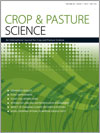Flooding is the major abiotic stress in flood-prone rice ecosystems, where duration, severity and turbidity of flooding are the factors negatively affecting survival and crop growth worldwide. Advances in physiology, genetics, and molecular biology have greatly improved our understanding of plant responses to stresses, but nutrient-management options are still lacking. This study was conducted to investigate the combined effect of silica (Si), phosphorus (P) and nitrogen (N) with Sub1 and non-Sub1 cultivars of rice under clear and turbid water submergence. Submergence tolerance effects on allometry, metabolic changes, photosynthetic rate and ethylene accumulation were evaluated. Application of Si reduced elongation, lodging and leaf senescence, with more prominent effects when applied with basal P. Combined effect of Si, N and P significantly improved, growth, photosynthetic rate, concentrations of chlorophyll and soluble sugars of rice after flood recovery, which led to higher plant survival. The findings of the study suggest that combined application of Si, N and P can significantly contribute to higher survival of rice seedlings and establishment thereafter in flash-flood prone areas.
How to translate text using browser tools
24 June 2015
Combined application of silica and nitrogen alleviates the damage of flooding stress in rice
B. Lal,
Priyanka Gautam,
S. Mohanty,
R. Raja,
R. Tripathi,
M. Shahid,
B. B. Panda,
M. J. Baig,
Liza Rath,
P. Bhattacharyya,
A. K. Nayak
ACCESS THE FULL ARTICLE

Crop and Pasture Science
Vol. 66 • No. 7
June 2015
Vol. 66 • No. 7
June 2015
Chlorophyll
ethylene
non-structural carbohydrates
photosynthesis
survival




